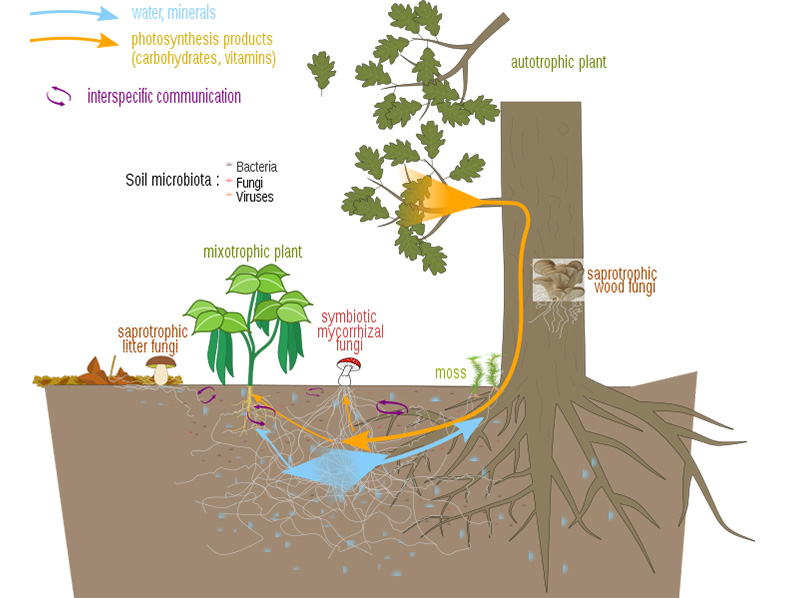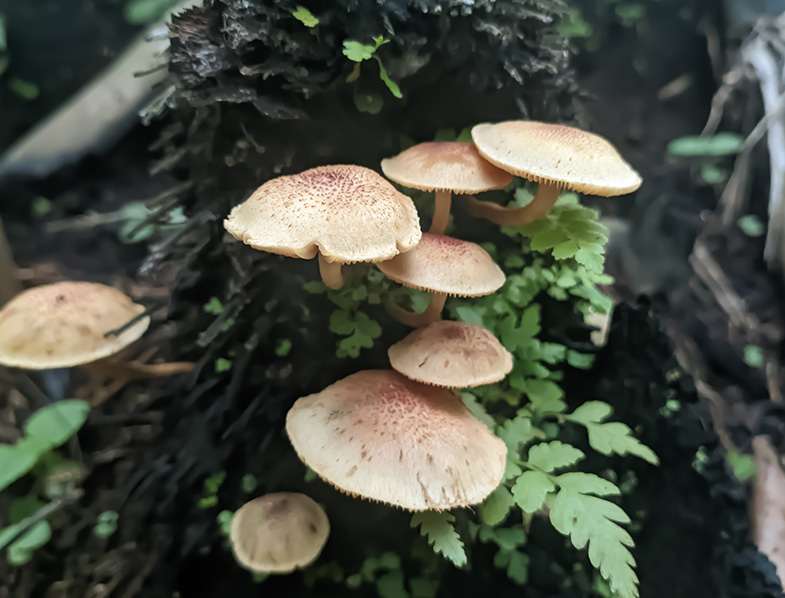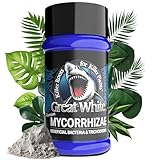Plants are amazing organisms that use various strategies to thrive and survive in their environment. One such strategy is the use of mycorrhizal fungi to form a symbiotic relationship with plants. Mycorrhizae are beneficial fungi that form a mutually beneficial relationship with plant roots. This relationship enables plants to access crucial nutrients and water from the soil while providing the fungi with carbon and other nutrients they need to grow. In this complete guide, we’ll explore everything you need to know about harnessing mycorrhizae for healthier plants.
Quick Facts
| Fact | Details |
|---|---|
| What are Mycorrhizae? | Beneficial fungi that form a symbiotic relationship with plant roots, aiding in nutrient and water absorption. |
| Types of Mycorrhizae | Mainly two types: Endomycorrhizae (penetrate plant root cells and common in agriculture) and Ectomycorrhizae (form a sheath around roots and common in forests). |
| Benefits of Mycorrhizae | They improve nutrient uptake, enhance resistance to diseases and pests, increase drought tolerance, and better soil structure and fertility. |
| Identifying Mycorrhizae | Presence can be detected by observing a white, thread-like substance (fungal hyphae) around plant roots, vigorous plant growth, or the attraction of certain insects. |
| Testing for Mycorrhizae | Soil testing and root examination are common methods to detect their presence. |
| Introducing Mycorrhizae to Your Garden | Choosing the right mycorrhizal inoculant and applying it through methods like direct application to the soil, root dipping, or root injection during planting or transplanting. |
Understanding Mycorrhizae
What are Mycorrhizae?
Mycorrhizae are fungal partners that form a symbiotic relationship with plant roots. They attach themselves to the plant roots and extend their network of fungal threads called hyphae into the soil. This network serves as an extension of the plant’s roots, enabling it to absorb nutrients and water from a much larger area.
One interesting fact about mycorrhizae is that they can form associations with a wide range of plant species, from small herbs to large trees. This means that they play a crucial role in maintaining the health and diversity of many different ecosystems around the world.
Types of Mycorrhizal Fungi
There are two main types of mycorrhizal fungi: Endomycorrhizae and ectomycorrhizae. Endomycorrhizae penetrate the plant root cells, while ectomycorrhizae form a sheath around the plant roots. Both types of fungi are beneficial to plants, but they form different relationships with their host plants.
Endomycorrhizae are more commonly found in agricultural settings, as they form associations with many of our most important food crops, including wheat, rice, and maize.
Ectomycorrhizae, on the other hand, are more commonly found in forest ecosystems, where they form associations with many of our most iconic tree species, such as oak, birch, and pine.
The Symbiotic Relationship between Plants and Mycorrhizae
The relationship between plants and mycorrhizal fungi is mutually beneficial. The fungi help the plant absorb nutrients and water from the soil, while the plant provides the fungi with carbon and other nutrients they need to grow. This relationship helps plants grow better, healthier, and more resistant to environmental stresses.
One interesting aspect of this relationship is that it can actually help plants defend themselves against herbivores and pathogens. When a plant is attacked, it can release chemical signals that attract mycorrhizal fungi, which in turn can release compounds that deter or even kill the attacker. This means that mycorrhizae not only help plants grow, but also help them defend themselves in the face of threats.
Overall, mycorrhizae are a fascinating and essential component of many different ecosystems around the world. By forming symbiotic relationships with plants, they help to maintain the health and diversity of these ecosystems, and play a crucial role in supporting life on Earth.

Benefits of Mycorrhizae for Plant Health
Mycorrhizae are a type of fungi that form a symbiotic relationship with plants, providing numerous benefits to the plant’s health. Let’s take a closer look at some of the benefits of mycorrhizae for plant growth and development.
Improved Nutrient Uptake
One of the primary benefits of mycorrhizae for plant health is improved nutrient uptake. Mycorrhizae enable plants to access essential nutrients such as phosphorus, nitrogen, and other micronutrients that are often limited in the soil. The fungal network of mycorrhizae extends beyond the plant’s root system, increasing the surface area for nutrient absorption. This results in healthier plants with stronger root systems and improved growth.
Enhanced Resistance to Diseases and Pests
Mycorrhizae also help plants resist diseases and pests by increasing their natural defenses. The fungal network in the soil can help protect plant roots from harmful organisms and promote the growth of beneficial microorganisms that can help control pests. This can reduce the need for chemical pesticides, making mycorrhizae an environmentally friendly option for plant health.
Increased Drought Tolerance
In addition to improving nutrient uptake and disease resistance, mycorrhizae can also help plants tolerate drought conditions. The fungal networks in the soil help to retain moisture, and the increased nutrient uptake makes the plants more resilient to drought stress. This is especially important in areas with limited water resources, where plants may struggle to survive without additional support.
Better Soil Structure and Fertility
Mycorrhizae can help improve the overall health of soil by breaking down organic matter, improving soil structure, and enhancing soil fertility. The fungal networks can help create a porous soil structure that promotes better drainage and water retention while also reducing soil compaction. This can lead to healthier plants with stronger root systems and improved growth.In conclusion, mycorrhizae offer numerous benefits for plant health and can be a valuable addition to any gardening or agricultural practice. By improving nutrient uptake, enhancing disease resistance, increasing drought tolerance, and improving soil structure and fertility, mycorrhizae can help promote healthy, thriving plants.
Identifying Mycorrhizae in Your Garden
If you are an avid gardener, you know that soil is the foundation of a healthy garden. One of the most important components of soil health is the presence of mycorrhizal fungi. These fungi form a symbiotic relationship with plant roots, helping them absorb nutrients and water more efficiently. In this article, we will explore the signs of mycorrhizal presence and how to test for mycorrhizal fungi in your garden.
Signs of Mycorrhizal Presence
As mentioned earlier, one of the most obvious signs of mycorrhizal presence is the appearance of a white, thread-like substance in the soil around your plants. This substance is actually the fungal hyphae that have formed a network around the plant roots. You may also notice more vigorous plant growth or improved plant health in areas where mycorrhizae are present. This is because mycorrhizal fungi help plants absorb nutrients and water more efficiently, leading to healthier and stronger plants.
Another interesting sign of mycorrhizal presence is the attraction of certain insects to your garden. Some insects, such as ants and termites, are known to be attracted to areas where mycorrhizae are present. This is because the fungi produce a sugary substance that is attractive to these insects. While this may not be a desirable side effect of mycorrhizal presence, it is still an interesting observation.
Testing for Mycorrhizal Fungi
If you are curious about the presence of mycorrhizal fungi in your garden, there are several ways to test for their presence. One of the most common methods is soil testing. This involves taking a sample of soil from your garden and sending it to a lab for analysis. The lab will be able to identify the type and concentration of mycorrhizae present in your soil.
Another method of testing for mycorrhizal fungi is root examination. This involves carefully digging up a plant and examining the roots for signs of mycorrhizal presence. If you see a white, thread-like substance around the roots, this is a good indication that mycorrhizae are present.
It is important to note that not all plants form a relationship with mycorrhizal fungi. Some plants, such as brassicas and spinach, do not benefit from mycorrhizal presence. However, many common garden plants, such as tomatoes, peppers, and beans, do form a relationship with mycorrhizal fungi and can benefit greatly from their presence.
Mycorrhizal fungi are an important component of soil health and can greatly benefit your garden. By understanding the signs of mycorrhizal presence and testing for their presence, you can ensure that your garden is healthy and thriving.

How to Introduce Mycorrhizae to Your Garden
Mycorrhizae are beneficial fungi that form a symbiotic relationship with plant roots, helping them absorb nutrients and water from the soil. By introducing mycorrhizae to your garden, you can improve the health and growth of your plants. Here’s how:
Selecting the Right Mycorrhizal Inoculant
When selecting a mycorrhizal inoculant, it’s important to consider the specific needs of your plants. Different types of mycorrhizae form relationships with different types of plants, so you’ll want to choose an inoculant that is compatible with the plants you’re growing. Additionally, consider the type of soil you have. Some mycorrhizal inoculants are designed for use in specific soil types, such as sandy or clay soils.
It’s also important to choose an inoculant that is high-quality and contains a sufficient amount of mycorrhizae. Look for products that have been tested and proven effective, and avoid those that contain fillers or additives.
Application Methods for Mycorrhizal Inoculants
There are several methods for applying mycorrhizal inoculants, each with its own advantages and disadvantages. The method you choose will depend on the type of plant and the inoculant you have selected.
Direct application to the soil is one common method. This involves mixing the inoculant with water and applying it to the soil around the plant’s roots. Root dipping is another option, which involves dipping the plant’s roots into a solution containing the inoculant. Root injection is a more targeted method, in which the inoculant is injected directly into the plant’s roots.
Timing and Frequency of Inoculation
The timing and frequency of inoculation will depend on the type of plant and the inoculant you have selected. In general, it’s best to apply mycorrhizal inoculant during planting or transplanting and every growing season to maintain the health of your plants.
It’s important to note that mycorrhizae are living organisms that require a suitable environment to thrive. To ensure the success of your inoculation, be sure to provide your plants with adequate water, nutrients, and a healthy soil environment.
By introducing mycorrhizae to your garden, you can improve the health and vitality of your plants, leading to bigger harvests and more beautiful blooms. With the right inoculant and application method, you can easily incorporate mycorrhizae into your gardening routine.
- Accelerates Germination and Rooting: Great White root powder for plants is a must-have for seed starting and transplanting. The powerful blend of mycorrhizae for plants and beneficial bacteria stimulates rapid germination and encourages vigorous root growth.
- Enhances Flowering and Fruit Development: The carefully selected microbial strains work in harmony with the plant's natural processes, resulting in abundant blooms, bigger fruits, and improved overall quality.
- Maximizes Nutrient Absorption: Great White root booster contains a diverse range of mycorrhizal fungi and other beneficial bacteria that form symbiotic relationships with plant roots. These microorganisms help to unlock and deliver essential nutrients from the soil.
- Increases Drought Resistance: Give your plants an extra layer of defense against drought stress with Great White. Mycorrhizal fungi for soil help improve water retention in the root zone.
- Suitable for All Growing Systems: Whether you're growing in soil, hydroponics, or other soilless mediums, Great White is compatible with all growing systems.
- FOR EVERYTHING YOU PLANT: Use Bio-tone Starter Plus fertilizer when planting / transplanting all plants.
- CONTAINS: Bio-tone Starter Plus is a rich blend of the finest natural & organic ingredients enhanced with both endo & ecto mycorrhizae and our exclusive Bio-tone formula; 4-3-3 Fertilizer analysis with 5% calcium. Bio-tone Starter Plus is environmentally Safe - No sludges or toxic ingredients.
- WHEN / HOW TO USE: Use Bio-tone Starter Plus fertilizer when planting / transplanting. Mix thoroughly with soil used to backfill the planting hole so the Bio-tone Starter Plus is in the plant root zone. It is ready to use.
- FOR ORGANIC GARDENING: Bio-tone Starter Plus is approved for organic gardening; It is a registered Organic Input Material meaning it meets all requirements for organic production.
- MADE IN THE USA: Product of the Espoma Company. The leader in natural organics since 1929.
Last update on 2024-10-04 / Affiliate links / Images from Amazon Product Advertising API
Conclusion
Mycorrhizae are vital for the health and well-being of plants. By forming a symbiotic relationship with plant roots, these beneficial fungi help plants absorb essential nutrients and water, resist diseases and pests, and tolerate extreme environmental conditions. Understanding how to harness mycorrhizae for healthier plants is a valuable skill for any gardener looking to improve the health and productivity of their garden.
Mycorrhizae FAQS
What is mycorrhizae and why is it important?
Mycorrhizae are beneficial fungi that form a symbiotic relationship with plant roots, helping plants absorb nutrients and water from the soil more effectively. They are important because they enhance plant health and growth by improving nutrient uptake, enhancing resistance to diseases and pests, increasing drought tolerance, and bettering soil structure and fertility.
Can you put mycorrhizae on top of soil?
Yes, mycorrhizae can be sprinkled onto the surface of the soil. However, they work best when they come into direct contact with plant roots, so incorporating them into the soil or applying them directly to roots during planting is usually more effective.
What are three benefits of mycorrhizae?
- Improved Nutrient Uptake: Mycorrhizae expand the root network, increasing the plant’s ability to absorb essential nutrients from the soil.
- Enhanced Resistance to Diseases and Pests: The presence of mycorrhizae increases a plant’s natural defenses, helping it resist diseases and pests.
- Increased Drought Tolerance: Mycorrhizae can help plants tolerate drought conditions by retaining moisture in the soil and boosting nutrient absorption, making plants more resilient.
How do you add mycorrhizae to potting soil?
Mycorrhizae can be mixed into potting soil when preparing pots for planting. Usually, you sprinkle the mycorrhizal inoculant into the potting mix and blend it thoroughly before planting. Make sure the inoculant comes into direct contact with the plant roots for the best results.
How do you add mycorrhizae to an existing plant?
For an existing plant, you can apply the mycorrhizal inoculant to the plant’s root zone. This can be done by gently mixing the inoculant into the soil around the plant or by making a small hole near the roots and adding the inoculant. It’s essential to ensure the mycorrhizae come into contact with the plant roots.
Can you add too much mycorrhizae?
While mycorrhizae are beneficial, it is possible to add too much. An overabundance of mycorrhizae doesn’t usually harm plants directly, but it can be wasteful and unproductive. It’s important to follow the recommended application rates on the product label for the best results.


